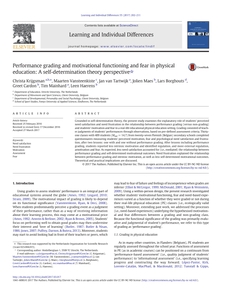De huidige preventiecampagne rond COVID-19 wil ons tot meer hygiëne en meer ‘sociale afstand’ brengen om zo het besmettingsrisico te verkleinen. Het is een breedspectrum-campagne langs de weg van het fear appeal, waarin de ernst van het risico ons tot verstandig gedrag moet bewegen. Dat is een mooie gedachte, maar – zoals ik al eerder schreef – niet genoeg. We kunnen ons na afgelopen weekend wellicht beklagen dat ‘veel mensen zo dom zijn om zich niet verstandig te gedragen’, maar het lijkt me gepaster om onszelf af te vragen ‘hoe konden we zo naïef zijn om te denken dat dit voldoende zou werken’? Zeker omdat er de dagen ervoor al genoeg signalen van het tegendeel te zien waren?
LINK
News media in The Netherlands show great variety in the extent and ways, in which they realize media accountability online in terms of actor transparency, product transparency and feedback opportunities online. It is suggested that even those news rooms that seem to adhere to transparency and public accountability still need to explore the functionality and application of media accountability instruments (MAI). Both in terms of potentials and pitfalls, news rooms need to consider about what they want to be transparent and in what ways. To the extent that online innovations are visible, traditional news media seem to experiment, as is the case with newsroom blogs or the project of hyper local journalism Dichtbij.nl, part of the Telegraaf Company. Various news media have on-going projects on audience participation, online applications and distribution models. However, since many projects merely aim at finding new applications, processes, platforms and business models, it remains to be seen assess whether projects are indeed reasonably innovative and feasible at the same time. The development of an online and therefore immediate, archived, personalized and interactive context, offers practical and ethical challenges to Dutch journalism. These challenges bring shifts in its role and responsibility to society. It means that changes occur in what journalists are accountable for, as well as ways in how they are accountable. The Dutch media landscape lodges various professional accountability instruments like the press council and both profession-wide and news media specific codes of ethics, but some of these instruments receive only moderate support. Proactive openness is more an exception than the rule and may well be a distinctive indicator for quality journalism. Although news media often acknowledge the importance of media accountability offline and online, they often lack the resources or courage to use them or have different priorities. This ambiguous position may indicate that in relation to media accountability online, Dutch news media are between hope and fear: that it will either improve their relationship with the public and fuel professional quality, or ask too much of resources with too little benefit.
DOCUMENT

Grounded in self-determination theory, the present study examines the explanatory role of students' perceived need satisfaction and need frustration in the relationship between performance grading (versus non-grading) and students' motivation and fear in a real-life educational physical education setting. Grading consisted of teacher judgments of students' performances through observations, based on pre-defined assessment criteria. Thirty-one classes with 409 students (Mage = 14.7) from twenty-seven Flemish (Belgian) secondary schools completed questionnaires measuring students' perceived motivation, fear and psychological need satisfaction and frustration, after two lessons: one with and one without performance grading. After lessons including performance grading, students reported less intrinsic motivation and identified regulation, and more external regulation, amotivation and fear. As expected, less need satisfaction accounted for (i.e., mediated) the relationship between performance grading and self-determined motivational outcomes. Need frustration explained the relationship between performance grading and intrinsic motivation, as well as less self-determined motivational outcomes. Theoretical and practical implications are discussed.
DOCUMENT
